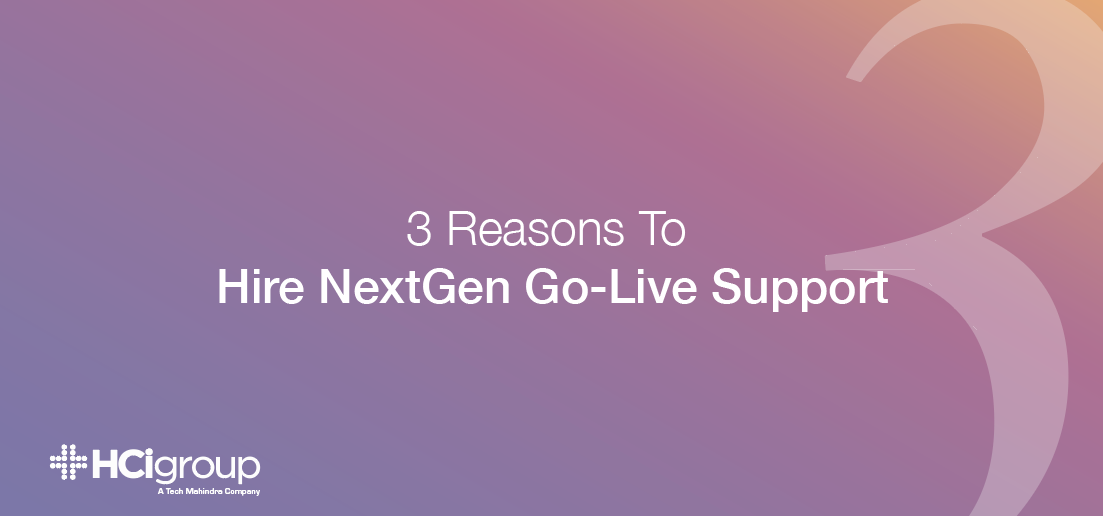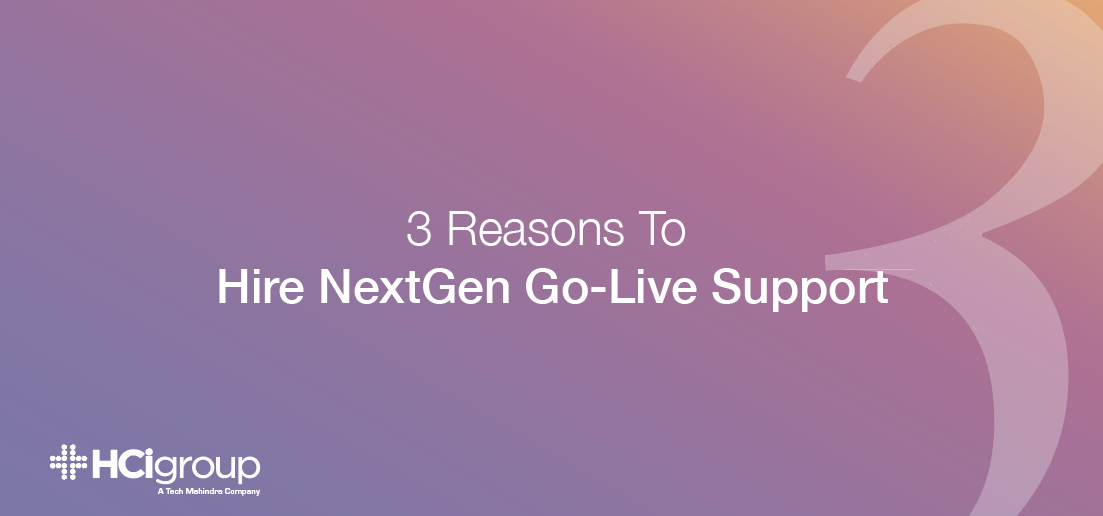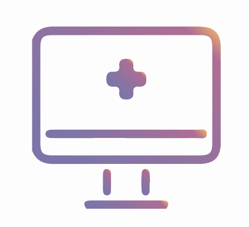3 Reasons To Hire NextGen Go-Live Support


While the planning involved in EHR implementation is extensive, it’s important that healthcare organizations stack the deck when it comes to roll-out. In our experience, hospitals and large practices can rarely afford a long period of solution overlap or clinical disruption, which is why a successful launch (and smooth landing) are clutch for mitigating extensive costs and slipped timelines. No matter how together a care delivery organization has it, opting for Go-Live support for NextGen EHR implementation is the insurance needed to push forward confidently and efficiently, allowing care providers and staff to focus on patients, not on technology.
Today we’re going to share three powerful value-adds that come with hiring healthcare IT consultants to support a large-scale NextGen Go-Live.
#1: Logistics Coordination for EHR Go-Live
Anyone who has ever planned and managed a healthcare IT implementation knows that toward the tail end of the project, you start to feel more like an Executive Assistant or Travel Agent. Making arrangements for on-site resources (local or otherwise), securing training locations and arranging those sessions (including snacks, if you’re wise), establishing a Go-Live War Room and engaging  vendors and third-parties to support it, and making sure that schedules of dozens of key resources align to rally for any possible issues or hiccups is no small task. In fact, it’s hundreds of little tasks that even talented PMs may not be able to execute while continuing to oversee milestones up to the very end.
vendors and third-parties to support it, and making sure that schedules of dozens of key resources align to rally for any possible issues or hiccups is no small task. In fact, it’s hundreds of little tasks that even talented PMs may not be able to execute while continuing to oversee milestones up to the very end.
By using your resources to augment the project team for logistics coordination, you’re allowing the right people to focus on the right tasks, and avoiding burnout when details matter most. Skipping a critical network config or failing to have lunch ready at the appointed time could mean the difference between smooth sailing and shipwrecks (with a boatload of hangry passengers).
#2: Super User Support At Go-Live Sets The Stage For True NextGen Adoption
We’re big fans of helping clients help themselves. The utilization of EHR Super Users is a great practice to ensure that expertise on NextGen workflows and functionality stays within the healthcare organization implementing the solution. This is truly the only way that organizations can scale and accept responsibility for their EHR fate moving beyond Go-Live.
The Role Of An EHR Super User
The primary responsibility of a Super User during NextGen implementation is to serve as the training wheels for the healthcare organization end users. While there is often a whole team of support and training resources available to encourage a great launch, it’s vital to sooner than later get the end users who will long term live with the EHR solution fully trained and self-sustaining as much as possible.
Super Users serve as the internal (i.e. they’re employed by the hospital, healthcare organization, or long-term staff augmentation partner, well known to employees) point of contact for questions, issues, workflow optimization suggestions, and anything else to do with the solution. They become the first stop for all feedback related to the new NextGen system, and can assist with escalating as needed (such as when an integration point isn’t functioning as expected) or regrouping for additional training when best practices are falling by the wayside and resulting in productivity logjams. EHR consulting partners can provide and/or train Super Users who are adept at handling this key responsibility and aiding clients in executing NextGen Go-Live that sticks and serves the health system as hoped.
organization, or long-term staff augmentation partner, well known to employees) point of contact for questions, issues, workflow optimization suggestions, and anything else to do with the solution. They become the first stop for all feedback related to the new NextGen system, and can assist with escalating as needed (such as when an integration point isn’t functioning as expected) or regrouping for additional training when best practices are falling by the wayside and resulting in productivity logjams. EHR consulting partners can provide and/or train Super Users who are adept at handling this key responsibility and aiding clients in executing NextGen Go-Live that sticks and serves the health system as hoped.
#3: Go-Live Dress Rehearsals
Some clients balk at the idea of an EHR GoLive run-through, citing time and effort concerns. It’s valid, sure, but we also can’t argue enough for the value of learning tough lessons and identifying gaps before the Big Show. Leveraging NextGen implementation consultants to stage workflow run-throughs and practice runs in the new system can help minimize the time spent troubleshooting at Go-Live and maximize the hands-on time to really support end users and equip Super Users for adoption.
It’s no small task to unleash a new healthcare IT solution in a large care setting, so taking a calculated approach to roll-out can help avoid significant clinical disruption and give stakeholders the assurance they needed that the ROIs anticipated aren’t too far off in the distance.
